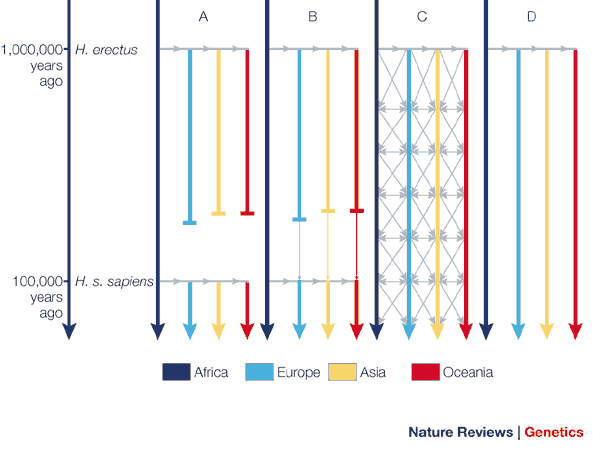Out-of-Africa versus the multiregional hypothesis
Keywords
Flag Inappropriate
Delete Content

Out-of-Africa versus the multiregional hypothesis
Broadly speaking, there are two competing hypotheses on the origin of modern humans: the Out-of-Africa hypothesis and the multiregional hypothesis. Both agree that Homo erectus originated in Africa and expanded to Eurasia about one million years ago, but they differ in explaining the origin of modern humans (Homo sapiens sapiens). The first hypothesis proposes that a second migration out of Africa happened about 100,000 years ago, in which anatomically modern humans of African origin conquered the world by completely replacing archaic human populations (Homo sapiens; Model A). The multiregional hypothesis states that independent multiple origins (Model D) or shared multiregional evolution with continuous gene flow between continental populations (Model C) occurred in the million years since Homo erectus came out of Africa (the trellis theory). A compromised version of the Out-of-Africa hypothesis emphasizes the African origin of most human populations but allows for the possibility of minor local contributions (Model B).
This image is linked to the following Scitable pages:
Researchers have used distinct markers from human subpopulations to trace back to our common African root in a giant human "tree." However, a “trellis” model might be more appropriate.





















Comments
CloseComments
Please Post Your Commenthttp://bharatkalyan97.blogspot.in/2013/04/defining-meluhha-demise-of-dravidian.html
sujay rao mandavilli